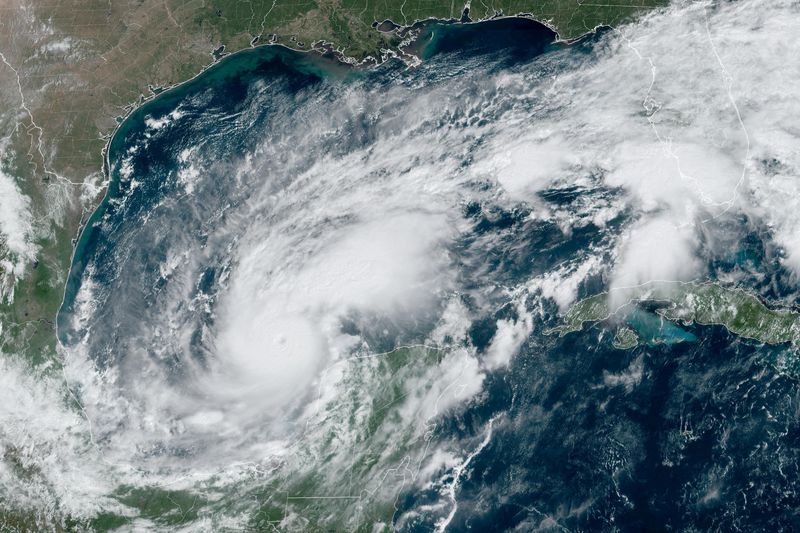By Marianna Parraga and Anushree Mukherjee
HOUSTON (Reuters) -At least one oil and gas platform in the U.S. Gulf of Mexico was shut on Monday and Florida ports imposed restrictions on vessel navigation as Hurricane Milton rapidly intensified.
Most energy infrastructure on the U.S. Gulf Coast, including oil and gas production facilities, liquefied (LNG) plants and refineries, is expected to be out of the storm path, but the closure of terminals could temporarily disrupt exports and imports.
Florida was the sixth largest state exporter of goods last year, according to the Office of the U.S. Trade Representative.
Meteorologists forecast 10 to 15 feet (3.05 to 4.57 meters)of storm surge, 140 miles per hour (mph) wind gusts and say more than 2 feet of rain is possible along the Florida Gulf Coast in the area Milton makes landfall, probably near Tampa.
“Milton is a potentially catastrophic Category-5 hurricane,” the U.S. National Hurricane Center (NHC) said on Monday.
Some weakening is anticipated before Milton reaches the west coast of the Florida Peninsula by Wednesday, but it is forecast to remain “an extremely dangerous hurricane through landfall,” the NHC added.
President Joe Biden approved an emergency declaration for Florida. The White House urged those in the path of the storm to make immediate preparations.
Electricity provider Duke Energy (NYSE:) said it was mobilizing about 10,000 responders in Florida as it prepared for more than 1 million power outages associated with Milton.
U.S. energy producer Chevron (NYSE:) said on Monday that all staff from its Blind Faith platform in the Gulf were transported and the facility had been shut.
Blind Faith, located 160 miles (257.5 km) southeast of New Orleans, is Chevron’s deepest water development in the world. It produces oil from four wells and has two flow lines that route crude and gas to a platform moored in 6,500 feet of water.
Production from Chevron’s other operated Gulf of Mexico assets remained at normal levels, it added.
Oil and gas producer Woodside (OTC:) Energy said is monitoring weather conditions in the Gulf and plans to deploy a response plan to deal with the storm if required.
The ports of Cedar Key and Sand Key in Florida were shut to vessel traffic, while Key West was preparing to close early on Tuesday, the U.S. Coast Guard said. Navigation restrictions were imposed at almost all remaining ports in Florida, including Miami, Port Everglades, Palm Beach, Tampa, St. Petersburg, Fort Myers, SeaPort Manatee, Panama City, St. Joe, Port Canaveral, Jacksonville and Fernandina.

Other ports in Mississippi and Alabama that handle oil and fuel imports and exports, including Pascagoula and Mobile, remained open on Monday, the Coast Guard said.
LNG facilities on the U.S. Gulf Coast are mostly out of the storm path. However, the United States exports marginal volumes of LNG in ISO containers from the ports of Miami and Fort Lauderdale data from the U.S. Energy Department shows.

